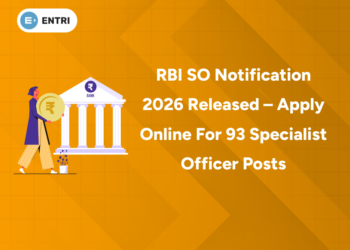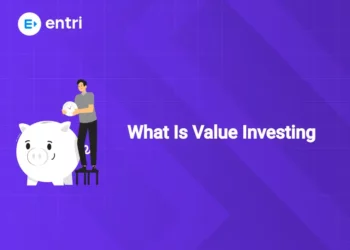Table of Contents
Marketing management is the 8th unit in the syllabus of Commerce UGC NET 2022. This article will briefly introduce the major concepts under this unit and will aid you in the preparation of Marketing Management for Commerce UGC NET notes.
Marketing is described as the development and distribution of products and services for selected customer sections by which profitability is accomplished with an objective of client gratification. Marketing actions begin with new merchandise ideas and plans are analyzed and elaborated to meet precise customer wants.
Marketing Concepts
Business firms do their marketing activity around the following five principles
-
Production Concept
The production concept argues that the customers will favor products that are extensively available and low-priced. The notion is based on the production orientation of the company. It is based on the thought that the more we produce, the more profit we gain. This seems a practical plan in an emerging market where market expansion is the survival policy for the company. Application of this idea will lead to poor quality of service and a greater level of detachment in business.
-
Product Concept
The product concept has the suggestion that customers will prefer those goods that provide factors like quality, performance and other novel features. Executives concentrate on developing top-quality goods and refining the current goods lines over time. Modernizations in the scientific laboratory are commercialised and customers get a chance to understand and use these goods. This is known as the “Technology Push Model”. The tricky situation with this method is that supervisors will overlook the customer’s likes and introduce goods based on their scientific study and inventions. Many times, it is seen that revolutions arrive in the market before the market is ready for that kind of product.
-
Selling Concept
The selling concept argues that the customers and company, if left undisturbed for a period, generally will not purchase enough of the company’s goods. Hence the firm should start an insistent selling and promotion campaign. This method is applicable in situations where the company sells goods that are normally unsought for. Companies with great capacity apply this method, in which they aim to trade what they manufacture than what the purchaser desires. The drawback of this method is the supposition that the purchaser will surely buy the goods after persuasion and if discontented will not protest. In truth, this does not occur and businesses following this notion often fail in commerce.
Click here to view Business statistics lecture notes
-
Marketing Concept
The marketing concept states that the best way to achieve organizational objectives involve the firm being more efficient than the competitors in creating, delivering, and communicating client worth to its selected target markets. The victory of this marketing idea relies on the company-wide reworking of marketing culture. If every section thinks about the clients and keeps them as the top priority in their decision making, then the company can attain a total market-oriented culture. Profitability is now a result that comes out of struggles and tactics followed by companies in making a greater quality product, value and greater consumer gratification.
-
Relationship Marketing Concept
The relationship-marketing concept states that marketing, as a commercial function is influenced by continuity of time and hence necessitates the need to create robust relationships with the client. This method lets the company track and study the development of a client’s necessities over time. In relationship marketing, client profile, purchasing patterns, and history of interactions are preserved in a sales record. An account manager is allocated to one or more main clients to satisfy their desires and preserve the relationship. The good side of this notion lies in its skill to organize scattered information and render the same into a strong marketing policy.
-
Holistic Concept of Marketing
The holistic concept of marketing proposes that the purpose of marketing needs a wide canvas with numerous viewpoints to embrace the interaction of aspects active in the economy, society and the market. The idea as explained by Philip Kotler is founded on the development, design and application of marketing agendas, procedures and actions that recognize the extensiveness and inter dependencies. A marketing policy created by thinking about the company as a whole, its position in the wider economy and society, and in the lives of its clientele is denoted as holistic marketing. It attempts to advance and preserve multiple outlooks on the firm’s industrial activities. This notion of marketing matches with the idea of sustainable development that pursues to embrace economic, environmental and social aspects.
Click here to attempt a UGC NET 2022 mock test
Marketing Management Process
- Identifying customer needs (Market Analysis): A dealer is required to recognize marketing openings by analyzing and skimming the external environment and gathering market associated data to guess present market demand and calculate the future potential.
- Segmentation: The marketing executive sections the market to recognize a similar set of clients who are more possible to reply more positively to the prearranged marketing program. The marketing executive appraises the ranks of competing brands in the market and chooses an appropriate and exclusive position, which will separate its proposal from the competitors.
- Targeting: Identification and selection of targeted segments and placing strategy aids the dealer to advance the latest product or service proposal for the market.
- Develop marketing strategies (Marketing Planning): They develop the goods or service, impart it a brand name and choose a pricing tactic for the latest proposal. The pricing tactic is definite for the whole life of the goods or service and not just for the preliminary period of the proposal. They also develop a tactic about managing pricing deviations in counteracting the competitor’s counter pricing plan. They also set up mediators and employs sales staff to take the proposal to the market. Design and choice of value networks aid in distributing the goods into various sections of the market.
- Implementation of the marketing program: The marketing executive strategies combined marketing communication policy through a mixture of devices like advertising, sales promotion, public relations and direct marketing to endorse the goods or service in the market for greater consumption and brand image. The marketing executive integrates all the essentials of the marketing program via product, price, value networks, sales force and integrated marketing communication devices through efficient management and regulation. The marketing executive performs the marketing plan by rendering it into numerous effective plans and short-term agendas, whose time-bound outcomes can be measured.
- Control of the total marketing efforts: Marketing regulation is a procedure of bench-marking the used effort and capital with the established objectives. Accomplishments are assessed with the predetermined aims to find out the insufficiency if any, and to design improved action tactics for the future so that the efficiency of the resources used and movement of profit rise.
Click here to watch video lectures on accountancy
Marketing Mix
A marketing mix is the mixture of the factors of marketing and what roles each factor plays in endorsing your goods and services and distributing those goods and services to your clients. The word ‘marketing mix’ became widespread when Neil H Borden printed his 1964 editorial ‘The Concept of Marketing Mix’. The 4 P’s of marketing that are the factors of a marketing mix are stated below:
- Product: The goods or services presented to your client – Their physical qualities what they do, how they vary from your competitors and what advantages they give.
- Price: How you value your good or service so that your cost remains competitive but permits you to gain a decent profit. How cost plays a role in your marketing tactic concerning separating your goods or services from your competitors.
- Place (Distribution): Where your company trades its goods or services and how it gets those goods or services to your clients may also be utilized in your marketing tactic to separate you from your competition.
- Promotion: The approaches utilized to communicate the aspects and advantages of your goods or services to your target clients.
Most of the important subtopics of the unit Marketing Management are introduced in the article above. Go through the Marketing Management for Commerce UGC NET 2022 syllabus for more detailed information on all the themes discussed under the unit. Marketing Management is one of the topics that help you to improve your score as well as your rank.Download the Entri app to get more notes and video lectures for helping you with the preparation for Commerce UGC NET 2022.












